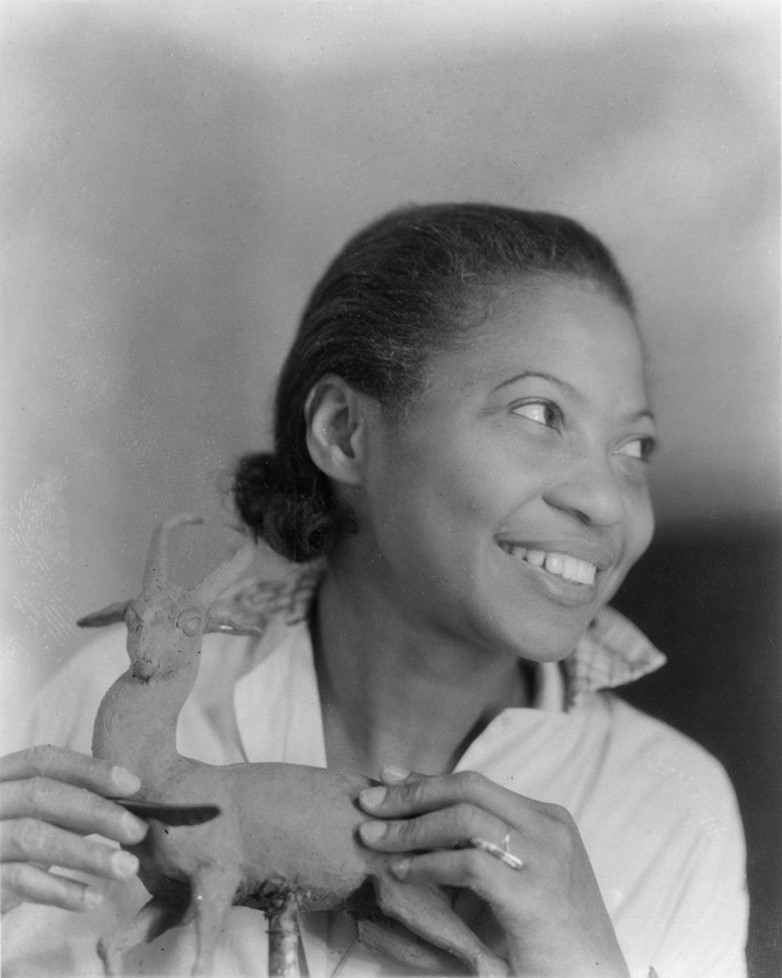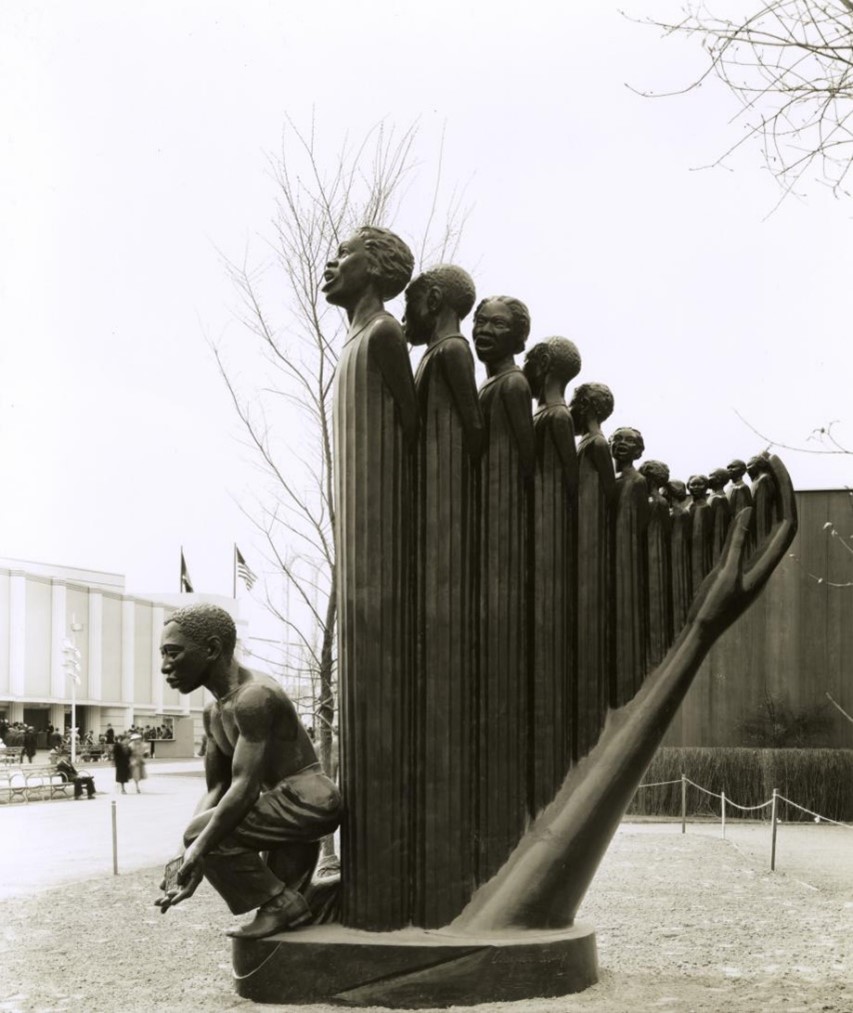Published: February 7, 2024
This year's theme is "African Americans and the Arts"
February is Black History Month, and we invite you to join us in observing the achievements of African Americans in U.S. history. This year we spotlight three African American women who contributed to the cultural movement of the Harlem Renaissance.
During the time period between the end of World War I (1917), and the beginning of the Great Depression, and leading up to World War II (the 1930s), the Harlem Renaissance was a time of rich cultural and artistic activity among African Americans. The movement raised consciousness of inequality and asserted pride in black life, identity and culture, inspired new waves of artists, and laid groundwork for the civil rights movement and the Black Arts Movement. Women artists of the Harlem Renaissance participated especially as singers, actors, dancers, and writers. Less well-known are the women visual artists of the period. Gaining access to the visual arts scene was more difficult than entry into the performing arts, as the practice of painting, and sculpture in particular, were not considered gender-appropriate or “feminine.” Source: Harlem Renaissance, National Gallery of Art
Augusta Savage

During the 1930s, Augusta was well known in Harlem as a sculptor, art teacher, and community art program director. She established the Savage Studio of Arts and Crafts in Harlem and was mentioned in the Congressional Record Volume 148, Issue 19 (February 28, 2002), as the first African American member of the National Association of Women Painters and Sculptors.  She was also commissioned by the 1939 New York World's Fair to create a sculpture
that symbolized musical contributions of African Americans. She died in 1962 following a long bout with cancer. Read more of her story on the
Smithsonian Institution's website.
She was also commissioned by the 1939 New York World's Fair to create a sculpture
that symbolized musical contributions of African Americans. She died in 1962 following a long bout with cancer. Read more of her story on the
Smithsonian Institution's website.
Image: Augusta Savage, circa 1930s, Source: National Archives
Image: The Harp Sculpture on display at the World’s Fair in New York City, 1939, Source: National Archives
Lois Mailou Jones
 Lois, encouraged by her parents, began her artistic studies in her early teens. She studied at the Boston Museum School as well as in Washington D.C. and New York. She was named professor at Howard University in 1930 where she taught for 47 years before retiring. In 1953 she married a Haitian painter and her works reflected life there as well as their travels abroad. She got her big break in 1937, with a fellowship to study in France at the Académie Julien, a private art school for painting and sculpture, during a sabbatical from Howard. She became interested in studying the history of African masks and used them in her creative paintings.
Lois, encouraged by her parents, began her artistic studies in her early teens. She studied at the Boston Museum School as well as in Washington D.C. and New York. She was named professor at Howard University in 1930 where she taught for 47 years before retiring. In 1953 she married a Haitian painter and her works reflected life there as well as their travels abroad. She got her big break in 1937, with a fellowship to study in France at the Académie Julien, a private art school for painting and sculpture, during a sabbatical from Howard. She became interested in studying the history of African masks and used them in her creative paintings.
Image: Loïs Mailou Jones, Self Portrait, 1940, Smithsonian American Art Museum, Bequest of the artist, 2006.24.2
 As her style transformed over her career, she was constantly seeking new levels of perfection. She received numerous international and national awards and honors throughout her lifetime and several honorary doctorates. On April 2, 1980, President Jimmy Carter honored her in at a White House ceremony for her achievements in the arts ( Public Papers of the Presidents of the United States: James E. Carter, Jr. (1980, Book I), p. 628). In the Congressional Record Volume 156, Issue 133 (September 29, 2010), she was honored for being an innovative trailblazer from the Harlem Renaissance. She died at the age of 92 in her home in Washington D.C. Read more of her story on the Department of State's website.
As her style transformed over her career, she was constantly seeking new levels of perfection. She received numerous international and national awards and honors throughout her lifetime and several honorary doctorates. On April 2, 1980, President Jimmy Carter honored her in at a White House ceremony for her achievements in the arts ( Public Papers of the Presidents of the United States: James E. Carter, Jr. (1980, Book I), p. 628). In the Congressional Record Volume 156, Issue 133 (September 29, 2010), she was honored for being an innovative trailblazer from the Harlem Renaissance. She died at the age of 92 in her home in Washington D.C. Read more of her story on the Department of State's website.
Image: Loïs Mailou Jones, Les Fétiches, 1938, oil on linen, Smithsonian American Art Museum
Zora Neale Hurston
![Van Vechten, C., photographer. (1938) Portrait of Zora Neale Hurston. , 1938. Apr. 3. [Photograph] Retrieved from the Library of Congress, https://www.loc.gov/item/2004663047/](/media/zora_neale_hurston_loc.jpg) Zora was a folklorist and novelist before later becoming known as a playwright and filmmaker. In the Congressional Record Volume 143, Issue 109 (July 29, 1997), she is noted as one of America's voices in the 20th century.
She attended Morgan Academy, which is now Morgan State University, and Howard University, and became the first African American women to graduate from Barnard College in 1919 where she conducted folklore studies. She later used these studies and her own experiences in her writings celebrating African American folkways of the rural south. She died in a Florida in 1960, but an interest in her works revived in 1975 when the novelist Alice Walker published an essay, "In Search of Zora Neale Hurston" in Ms. Magazine. Her books came back in print and a commemorative stamp was created in her honor. Read more of her story in the National Endowment for the Humanities article,
"What Zora Went Looking For."
Zora was a folklorist and novelist before later becoming known as a playwright and filmmaker. In the Congressional Record Volume 143, Issue 109 (July 29, 1997), she is noted as one of America's voices in the 20th century.
She attended Morgan Academy, which is now Morgan State University, and Howard University, and became the first African American women to graduate from Barnard College in 1919 where she conducted folklore studies. She later used these studies and her own experiences in her writings celebrating African American folkways of the rural south. She died in a Florida in 1960, but an interest in her works revived in 1975 when the novelist Alice Walker published an essay, "In Search of Zora Neale Hurston" in Ms. Magazine. Her books came back in print and a commemorative stamp was created in her honor. Read more of her story in the National Endowment for the Humanities article,
"What Zora Went Looking For."
Image: Van Vechten, C., photographer. (1938) Portrait of Zora Neale Hurston. , 1938. Apr. 3. [Photograph] Retrieved from the Library of Congress, https://www.loc.gov/item/2004663047/
Search GovInfo to see more government documents related to the Harlem Renaissance.
Additional Article Sources and Resources
- Read the National Archives blog "Not Just A Harlem Thing," to find out more about this historical movement.
- Learn more about the "Music of the Harlem Renaissance" on the National Endowment of the Arts website.
- Check out Harlem Renaissance classroom materials on the Library of Congress website.
- Explore the Harlem Renaissance in the National Gallery of Art's series "Uncovering America" to discover compelling stories of creativity, struggle, and resilience in their set of resources for K–12 educators featuring works of art that reflect the richness and diversity of the people, places, and cultures of the United States.
About Featured Content Articles – This series of articles aims to highlight content available in GovInfo related to various national observances, commemorations, anniversaries and more. See more featured content articles.